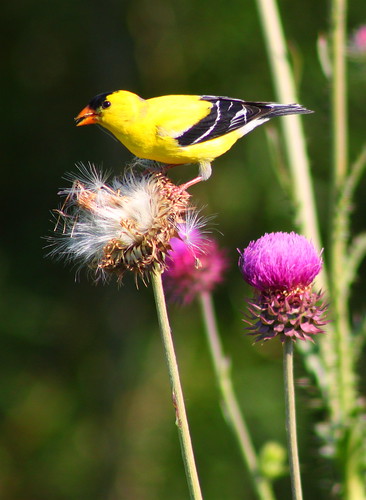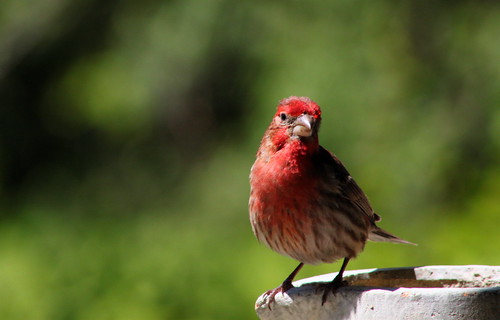Birds as we all know come in a great variety of colors, which is probably why we are so fascinated by them. From the browns and grays of sparrows, to the bright yellows and reds of goldfinches and cardinals, to the stunning blue hues of buntings and grosbeaks. While there are a great many birds that exhibit brown plumage, fewer exhibit yellows and reds, and fewer still exhibit blue feathers. What makes blue plumage so different that it only occurs in a handful of birds? Before we get in to what makes them so special we have to understand a little bit more about how other birds derive their color.
Many bird feathers achieve their brown coloration from a pigment known as melanin. Melanin determines the coloration of one's skin or feathers. The more melanin present the darker the pigment will be. In fact albinism is just the absence of melanin. But what does is mean to birds? In birds melanin can be more than just for coloration. It is theorized that melanin can be used by male birds to exert dominance over other males. The dark coloration of feathers is used as a signal that conveys fitness and superiority over other males, reducing the need for fighting among male species in some birds. Melanin also provides extra strength for bird feathers. Feathers that contain melanin are stronger and more resistant to wear and tear. In fact, many white birds have black on their wingtips to reduce the wear on the most important flight feathers.
Which brings us to "blue" birds. Blue feathers are unlike feathers derived from melanin or carotenoids. Instead of being produced through biophysical methods like melanin or achieved through diet like carotenoids, blue feathers are what is known as structural colors. Structural colors are produced by the arrangement of the barbules in the feathers to reflect light of a certain wavelength, in this case blue. So blue feathers are not made by any pigment, rather they are arranged in such a way to trick our eyes into seeing blue. If you shine a light on a blue feather from behind, what you will see won't be a blue feather, rather it will be brown. This is because the light source is not hitting it from above and scattering the light to reflect blue color to your eyes.
Structural color is also seen in the gorget of hummingbird species. The gorget is the bright iridescent throat patch that give many hummingbirds their names, like the Ruby-throated Hummingbird. These birds use structural colors in much the same way, but are different in one respect. The "blue" birds have structural feathers that include tiny nanoscopic air pockets that interrupt the light and gives the bird an even blue color. The gorgets of hummingbirds do not contain such air pockets and that is why their feathers give off a bright iridescent shine. The gorget feathers are much more closely aligned giving the feathers an almost metallic look.



 10:42 AM
10:42 AM








 Posted in:
Posted in: 




1 comments:
I thought I made a comment on this Ryan! I was using my phone I bet it didn't go through! Great post! I think I understand it a little better now!!
Post a Comment